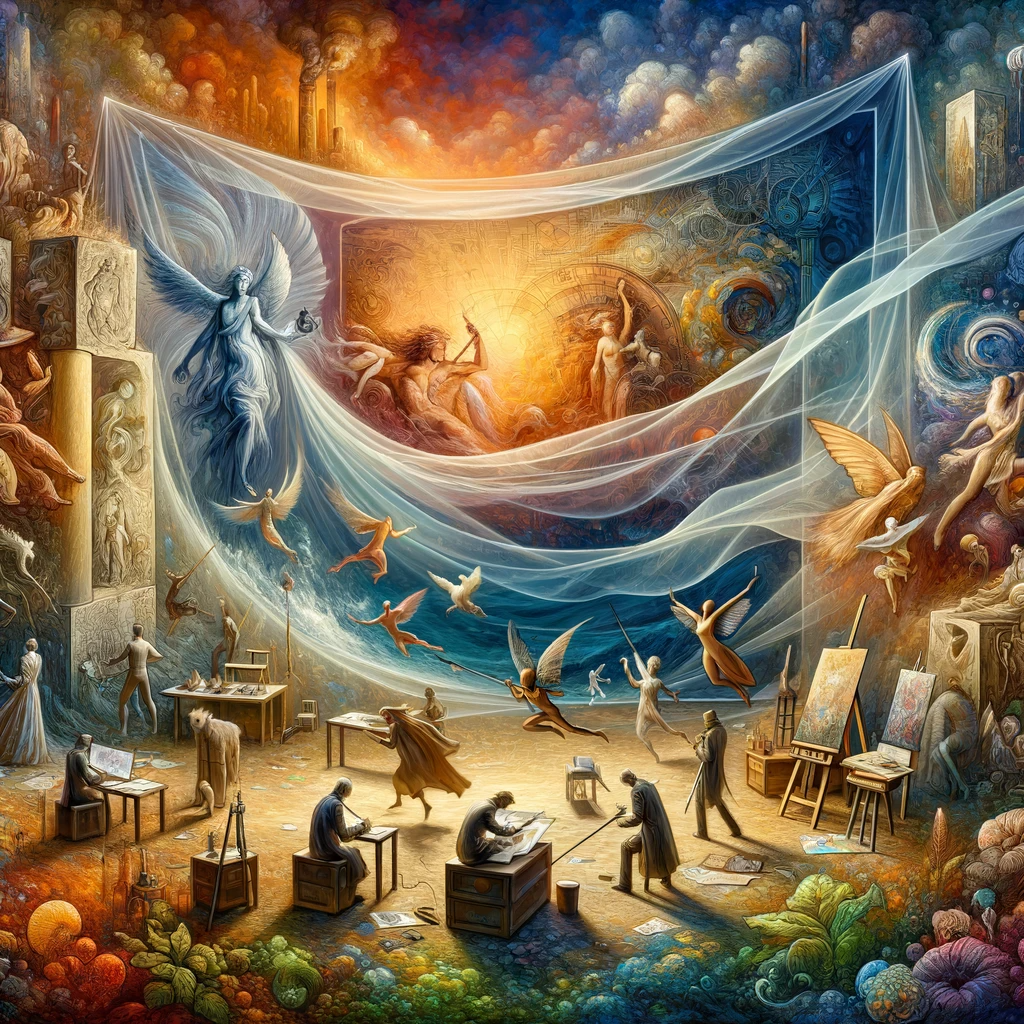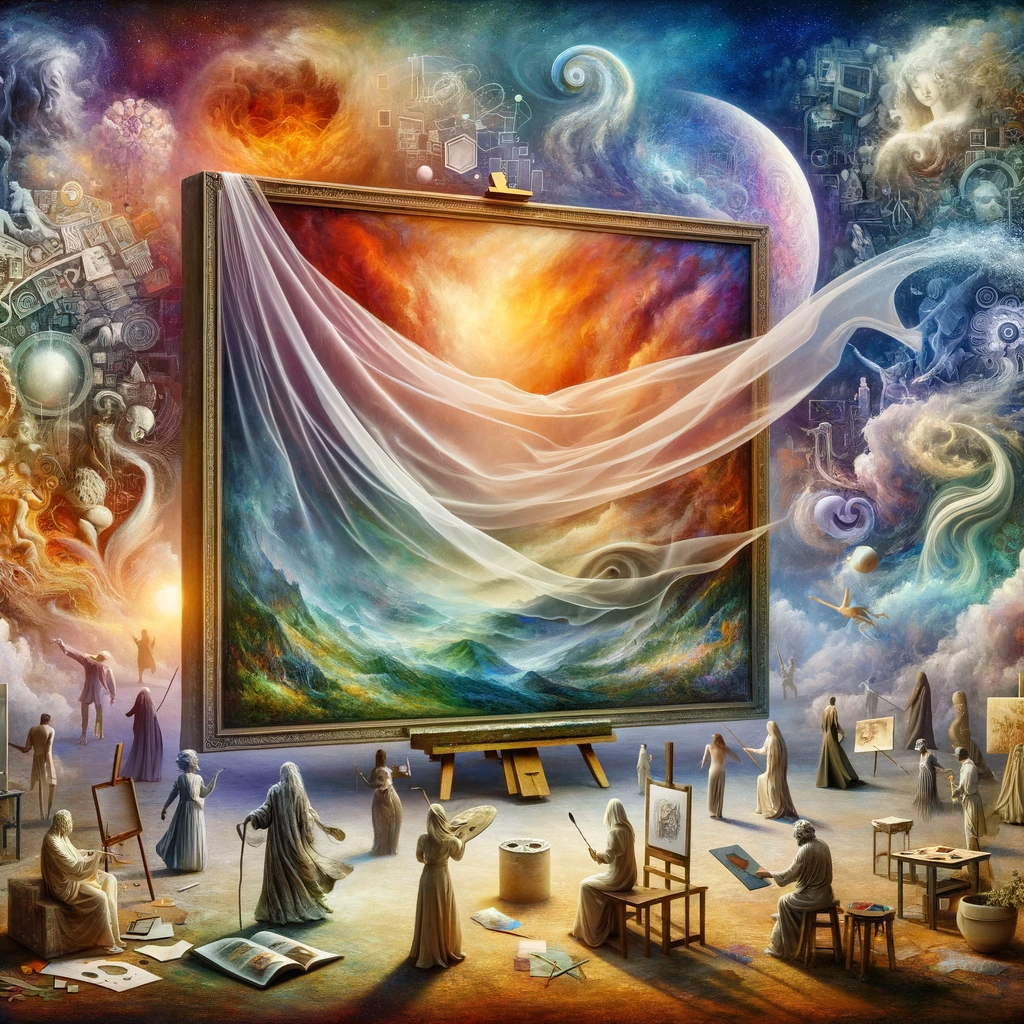Introduction:
Art is a universal language that transcends boundaries, weaving a tapestry of creativity that has adorned the pages of human history for millennia. From the ancient cave paintings that told stories of survival to the contemporary masterpieces that challenge societal norms, art has been an integral part of the human experience. In this exploration of the vast realm of art, we delve into its diverse forms, the power it holds, and its evolving significance in the ever-changing tapestry of human existence.
The Essence of Art:
At its core, art is a profound expression of human emotions, thoughts, and experiences. It serves as a mirror reflecting the complexities of the human psyche, offering a glimpse into the artist’s soul. Whether it be the strokes of a paintbrush on canvas, the harmony of musical notes, the carefully crafted words of literature, or the intricate dance of bodies, each form of art is a unique vessel for conveying the intangible aspects of the human experience.
Visual Arts: A Symphony of Colors and Shapes:
Visual arts encompass a vast spectrum of mediums, each contributing to the rich mosaic of human creativity. Paintings, sculptures, photography, and installations serve as tangible manifestations of the artist’s vision. From the iconic works of Renaissance masters like Leonardo da Vinci and Michelangelo to the bold strokes of contemporary artists like Banksy, visual art has the power to captivate, provoke thought, and stir emotions.
Sculpture, with its three-dimensional form, breathes life into raw materials, shaping them into evocative forms that transcend the boundaries of imagination. Consider the awe-inspiring sculptures of ancient civilizations or the modern abstract works that challenge conventional perceptions—each sculpted piece tells a unique story, leaving an indelible mark on the canvas of human history.
Photography, a relatively modern addition to the visual arts, freezes moments in time, preserving them for eternity. Through the lens, photographers capture the beauty, pain, and mundanity of life, offering viewers a window into worlds they may never otherwise experience. Iconic photographs like Dorothea Lange’s “Migrant Mother” or Steve McCurry’s “Afghan Girl” have become powerful symbols of human resilience and vulnerability.

Performing Arts: The Dance of Emotion and Movement:
In the realm of performing arts, the body becomes the canvas for expression. Dance, theater, music, and film weave narratives that resonate with the human spirit, invoking a range of emotions. The graceful movements of ballet, the raw intensity of contemporary dance, the emotional depth of theater, and the symphonic resonance of music all contribute to the symphony of human expression.
Dance, in its myriad forms, transcends cultural boundaries, speaking a language that is understood by all. From classical ballet to the vibrant traditions of Indian classical dance or the pulsating energy of hip-hop, dance communicates stories, traditions, and emotions. It is a celebration of the human body’s ability to convey meaning through movement, rhythm, and expression.
Theater, with its live performances, brings narratives to life on the stage. The interplay of actors, set design, and dialogue creates a visceral experience for the audience, immersing them in the world of the story. From the timeless works of Shakespeare to avant-garde experimental theater, the stage is a dynamic space for exploring the depths of human emotion and societal dynamics.
Music, perhaps the most transcendent of all art forms, has the power to evoke emotions that words alone cannot express. Across genres and cultures, music serves as a universal language that resonates with the soul. Beethoven’s symphonies, Bob Dylan’s folk ballads, or the rhythmic beats of traditional African drumming—all forms of music contribute to the rich tapestry of human expression.
Literary Arts: Words that Shape Worlds
In the written word, literature stands as a testament to the power of language to convey complex emotions, profound ideas, and imaginative worlds. Novels, poetry, essays, and other literary forms serve as windows into the minds of their creators, inviting readers to explore the depths of human thought and emotion.
Classic literature, from the epics of Homer to the novels of Jane Austen, has shaped cultures and societies, providing insights into human nature and the complexities of relationships. Modern literature, with its diversity of voices and perspectives, reflects the ever-changing landscape of our globalized world.
‘Contemporary art and the Digital Age:
As we stand on the precipice of the digital age, art continues to evolve in fascinating ways. The advent of technology has given rise to new forms of artistic expression, from digital paintings to virtual reality installations. Social media platforms provide artists with unprecedented opportunities to share their work with a global audience, democratizing the art world in ways previously unimaginable.
Street art, once confined to the walls of urban landscapes, has found a new platform on social media, allowing artists like Banksy to reach millions around the world. Digital art, with its infinite possibilities, challenges traditional notions of artistic mediums, opening the door to a new era of creativity.
The Power of Art: Catalyst for Change:
Beyond its aesthetic appeal, art has the power to incite change, challenge societal norms, and ignite revolutions. Throughout history, artists have used their creations as a medium for activism, shedding light on social injustices and advocating for positive change. Picasso’s “Guernica” depicted the horrors of war, while contemporary artists like Ai Weiwei confront issues of political dissent and human rights through their work.
Public art installations, murals, and sculptures often serve as symbols of resilience and hope within communities. The AIDS Memorial Quilt, a massive collaborative art project, memorializes those lost to the epidemic, fostering awareness and empathy. Art has the capacity to bridge gaps, foster dialogue, and create connections between people of diverse backgrounds and perspectives.
Conclusion:
In the intricate dance between creator and audience, art serves as a profound expression of the human experience. Whether through visual arts that captivate the eye, performing arts that move the body and soul, or literary arts that engage the mind, each form of artistic expression adds a unique brushstroke to the vast canvas of human creativity.
As we navigate the complexities of the 21st century, art continues to evolve, adapting to new technologies and reflecting the ever-changing landscape of our globalized world. It is a force that transcends borders, languages, and cultures, reminding us of our shared humanity and the boundless potential of human expression. In the words of Pablo Picasso, “Art washes away from the soul the dust of everyday life,” inviting us to explore the depths of our own humanity through the myriad forms of artistic expression that surround us.
